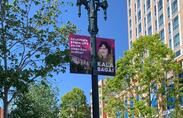Teaching the Holocaust and Armenian Genocide: For California Educators
Designed for California 10th grade world history courses, this unit guides students through a study of the Holocaust and the Armenian Genocide that focuses on choices and human behavior.

Latinx vs. Hispanic: A History of Terms
Learn about the history and debate surrounding how we describe Latinx and Hispanic peoples, and consider the relationship between language and identity.
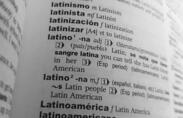
Mendez v. Westminster
Learn about the Mendez family's experience as Mexican Americans fighting against school segregation in Southern California during the 1940s.

Background on the Chicano Movement
Learn about the Chicano Movement of the 1960s and 1970s with this historical overview.

Latinx Rights in 1960s California
Explore two pivotal moments in the Latinx rights movement in California: the East LA school walkouts and the first year of the Delano grape strike.
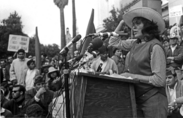
The 1968 East LA School Walkouts
Students learn about education, identity, and activism through an exploration of the East Los Angeles school walkouts, when thousands of students protested unequal educational opportunities for Mexican American students.
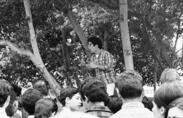
California Grape Workers’ Strike: 1965–66
Students explore the first year of the Delano grape strike, when grape workers in California's San Joaquin Valley went on strike to demand higher wages and better work conditions.

Dolores Huerta's Life of Indefatigable Resistance
Dolores Huerta helped advance civil rights and labor rights with her tireless advocacy, organizing a successful labor movement of US farm workers.

Becoming an Activist: A Conversation with Dolores Huerta
A Strength of My Neighborhood
A high school student describes how his neighborhood in Los Angeles helps him feel connected to the traditions of his family’s “old world” heritage in Mexico.

Latino Americans: The 500-Year Legacy That Shaped a Nation
Watch the landmark PBS documentary series Latino Americans, featuring interviews and more than 500 years of history.

Chicano! Episode 1: Quest for Homeland
This episode of Chicano! examines the beginnings of a national movement for social justice by profiling Reies Lopez Tijerina and the 1966–1967 land grant movement in New Mexico.
Chicano! Episode 2: The Struggle in the Fields
This episode of Chicano! chronicles the efforts of farm workers to form a national labor union under the nonviolent leadership of César Chávez.
Chicano! Episode 3: Taking Back the Schools
This episode of Chicano! paints a picture of the struggle to reform an education system that failed to properly education Mexican American students.
Chicano! Episode 4: Fighting for Political Power
This episode of Chicano! focuses on the emergence of Mexican Americans political activism and the creation of a third political party, La Raza Unida.
Complicating "Asian Americans"
Facing History explores the complex story surrounding this term to broaden educators' understanding of and ability to teach about AAPI and API histories and contemporary life.

Angel Island Immigration Station: Exploring Borders and Belonging in US History
This 5-7 day C3-aligned inquiry explores the compelling question “How does the history of the Angel Island Immigration Station help us understand how borders are erected, enforced, and challenged?”
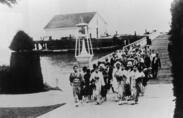
Asian Americans: Breaking Ground
In episode one, new immigrants arrive from China, India, Japan, the Philippines, and beyond. Eventually barred by anti-Asian laws, they become America’s first “undocumented immigrants.”
Asian Americans: A Question of Loyalty
In episode two, an American-born generation straddles their birth country and their familial homelands in Asia. This episode also examines the mass incarceration of Japanese Americans during World War II.
Asian Americans: Good Americans
In episode three, Asian American and Pacific Islanders are simultaneously heralded as a "model minority" and suspected as the perpetual foreigner during the Cold War years. AAPI individuals also aspire for the first time to national political office.
Asian Americans: Generation Rising
In episode four, a young generation fights for equality in the fields, on campuses, and in the culture, and claim a new identity: Asian Americans.
Asian Americans: Breaking Through
In episode five, Asian American and Pacific Islanders have become the fastest growing population in the US at the turn of the millennium, and the country tackles urgent debates over immigration, race, and economic disparity.
Becoming American Study Guide
This guide to accompany the film Becoming American helps students investigate identity and belonging through the stories of generations of Chinese immigrants in the United States and their paths to "becoming American."

Becoming American: The Chinese Experience Part One - Gold Mountain Dreams
The first of a 3-part series explores the early years of Chinese immigration to the U.S.
Becoming American: The Chinese Experience Part Two - Between Two Worlds
The second of a 3-part series explores the impact of the Chinese Exclusion Act
Becoming American: The Chinese Experience Part Three - No Turning Back
The third of a 3-part series explores the immigration laws of 1965, and intimate portraits of the new Chinese Americans
Laundrymen and Movies
Learn about the prejudice, stereotypes, and victimization Chinese and Chinese Americans faced in the US in the 1920s.
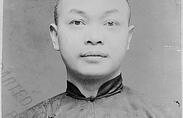
Doors to Opportunity
Read about the experiences of two young immigrants to the United States in the late 1800s and how race shaped the kind of education to each of them.
Platform of the Workingmen’s Party of California
The political platform of the Workingmen's Party of California, a third party organized around eliminating competition for white laborers in the West and advocating for a ban on Chinese immigration.
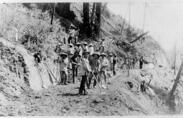
Chinese Immigrants Write to President Grant
Chinese leaders in California write to President Ulysses S. Grant in 1876 about the discrimination their communities face from a rising anti-Chinese movement.

Paper Sons and Daughters and the Complexity of Choices During the Exclusion Era
This reading details how and why some Chinese immigrants attempted to enter the country with fraudulent documents during the era of Chinese Exclusion.

The Legacies of Chinese Exclusion
Teach students about the Chinese Exclusions Act, an immigration law passed in 1882, and its lasting impact on attitudes toward citizenship and national identity in the United States today.
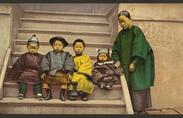
Bearing Witness to Japanese American Incarceration
Use these activities and resources on Japanese American incarceration during World War II to introduce students to this history while exploring questions about American identity, racism, and citizenship.
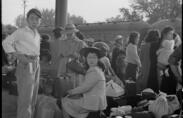
Teaching Farewell to Manzanar
Use this guide to Jeanne Wakatsuki's memoir about the incarceration of Japanese Americans during World War II to develop students' literacy skills and increase understanding of this history.

And Then They Came for Us
This history of Japanese American incarceration during World War II is retold in this documentary from Abby Ginzberg and Ken Schneider. It also follows Japanese American activists today as they speak out against the Muslim registry and travel ban.
“Berkeley Renames Downtown Street ‘Kala Bagai Way’ After South Asian Immigrant Activist”
This article is about how the city of Berkeley renamed a street after a South Asian immigrant activist, Kala Bagai.
